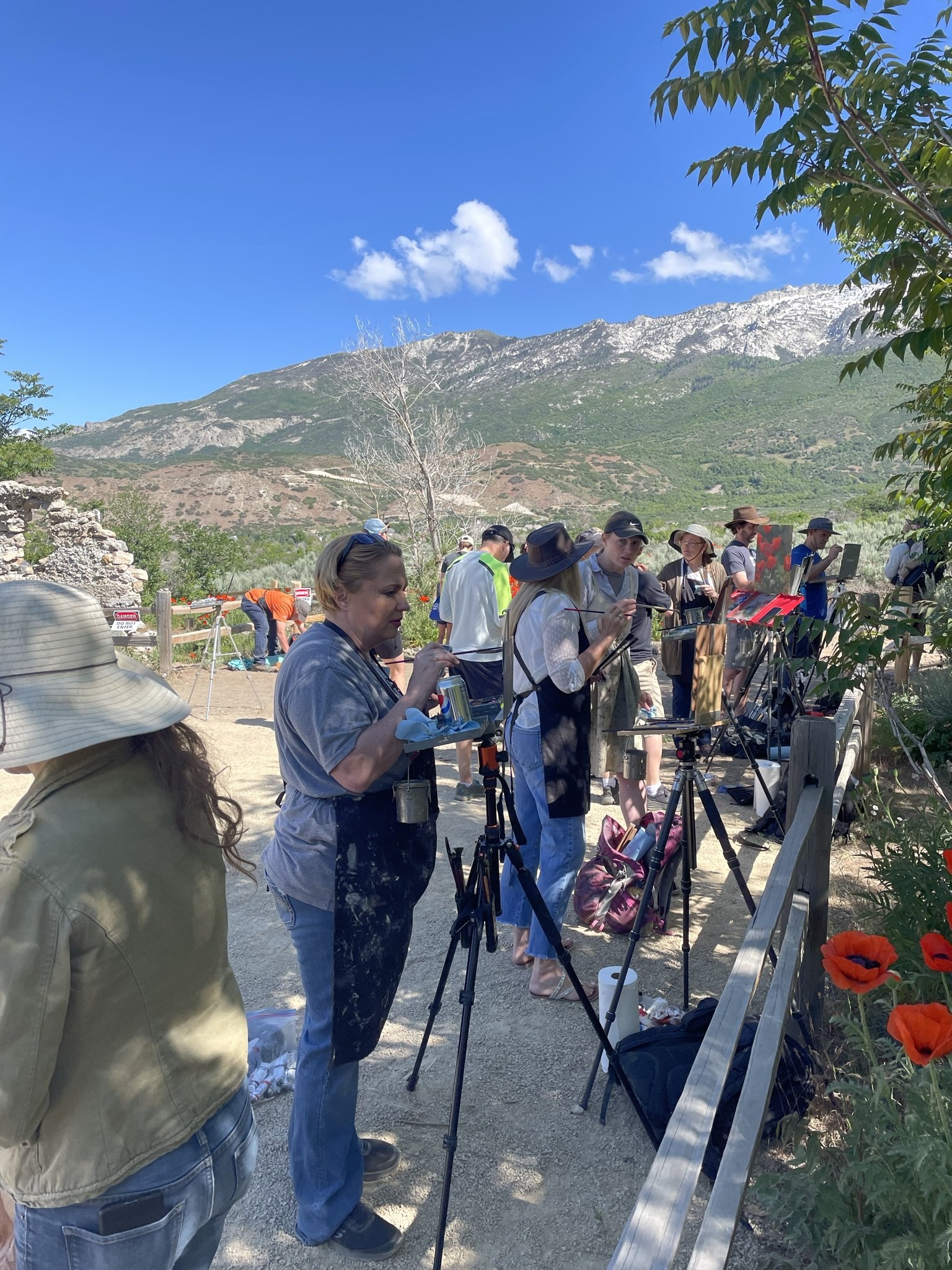But What Do I Wear? A Comprehensive Guide to Plein Air Painting Attire
The Grinch was right when he said “That’s it! I’m not going.”
What you wear can make a difference in whether you go plein air painting or not. The lack of planning might hinder your experience or may influence your painting outcome. To make good painting habits you need to make going out as easy as possible. Such as having your gear ready to go, a prepped list of locations you can visit regularly, and specific clothing. As we know from the previous blog, I’m quite particular about my painting transportation and my clothing is no different. Whether you want to look like a boho hipster or are ready to lead a safari please plan for your comfort level and ease of mind.
Spring/Summer
Let’s start from the top.
Hats
Wear some kind of hat. A baseball cap will work in a pinch but a wide-brimmed hat is best, it reduces eye fatigue and helps you regulate your body temperature. I love my hat, it’s a Tilley Airflo. It’s got this cool wind strap, can float in water, and has a sneaky little pocket. Yeah, it was a bit pricey, but I found a good deal on Amazon.
UPF Tops
Since I'm fair-skinned and prone to burning easily, avoiding skin cancer is a priority for me. That's why my go-to choice for sun protection is sun shirts in neutral colors to prevent any unwanted reflected color in my paintings. Whether it's a simple tee, a button-up, or a lightweight hoodie, you'll rarely catch me without one. I layer these sun shirts under my lab coat/smock/apron for added protection during my painting sessions. Which is another blog post entirely. *coming soon*Bottoms
While you're out scouting for the perfect composition, the choice between wearing shorts or pants is crucial. Opting for shorts can keep you cooler, but you'll still have to contend with the sun and bugs. On the other hand, pants provide coverage from both and offer plenty more pocket options. Back in college, I snagged a pair of old firefighter blue cargos from DI and filled every pocket to avoid lugging extra gear in my French Easel Satchel. Nowadays, I've upgraded to hiking pants with roll-up legs that can be secured in place with a snap for added versatility.
Footwear
Socks! If it’s hot or cold I recommend Darn Tough socks, they truly live up to their name. For shoes, are you an adventurous sandal-wearer? I’m not…boots are the way to go for me. The ankle support is fantastic and usually has great traction but the downside is that they can be heavy. I know an artist who brings sandals in the car so they have the option to go paint out in the water if they want to.
Personal Items and Accessories
Some other top picks that you should have on hand are sunscreen, bug spray, a phone or watch and one of my favorite accessories is a bandana. Is there a sliver of sun on your neck? Is there a dust storm? Are you hot? Unfurl the bandana and wear it or drench it in water and BAM you have a chill towel. Also, shoutout to trekking poles!
Fall/Winter
Hats
As the seasons change so does the angle of the sun in the sky and the amount of light bouncing around on an overcast or sunny day. This means depending on the weather, light bounces off the snow and into your eyes. I recommend a black beanie with a brim, it’ll absorb some of the light, or a wool hat. For me, I swear by my winter running cap—it not only covers my ears but also has a ponytail opening, which has been a game-changer for me.
Tops and Outerwear
Tis the season to layer! Start with a base layer, a mid-layer, and then a shell. The base layer wicks sweat away from your body to keep you comfortable. The mid-layer traps heat to keep you warm, and the shell protects you from the elements. Combined, these three layers help you stay warm, dry, and comfortable. Also, keep in mind mobility it’s a must to be able to raise your arms with no issue. I wear a Merino wool base layer, a long-sleeved t-shirt, a fleece or sweatshirt, and then a heavy-duty Lands End coat I bought second-hand.
Bottoms
Just like with tops, layering is key for bottoms too. Start with a base layer, add a mid-layer for warmth, and then top it off with a shell for protection. I wear a matching Merino wool bottom with either hiking pants lined with fleece insulation or trusty snow pants for those extra chilly days.
Footwear
Gotta keep those toes cozy and dry! Slip into some thick wool socks and waterproof boots to fend off the chill. For extra protection, stand on a rug, cardboard, or styrofoam to keep your feet insulated from the cold ground.
Personal Items and Accessories
Don't forget to bundle up with a scarf or gaiter to shield your face from chilly winds. Try out different glove options to find what works best for you. Personally, I like Palmth Ice Fishing Gloves—they're convertible from mittens to fingerless and pair perfectly with hand warmers. And of course, always have your phone and watch handy for emergencies. Lately, I've been bringing along a collapsible orange cone for better visibility to passing drivers. And if snow's coming down hard, consider bringing an umbrella for extra coverage.
“There’s no such thing as bad weather, only unsuitable clothing.”
― A. Wainwright
Now, what are you still doing here? Go out and paint!







